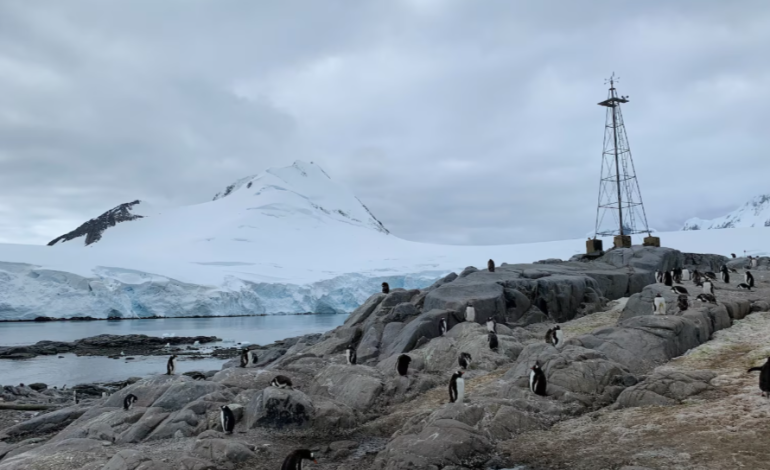Penguin Guano and Cloud Formation: A Natural Climate Regulator in Antarctica

New research suggests that penguins may play an unexpected role in mitigating climate change — through their droppings.
A study published in Communications Earth & Environment has found that ammonia emitted from penguin guano contributes to the formation of clouds, which may help cool surface temperatures in Antarctica.
Penguins, particularly in large colonies, are significant natural sources of ammonia. When this ammonia reacts with sulfur-containing gases emitted by ocean phytoplankton, it promotes the formation of aerosol particles in the atmosphere. These particles serve as nuclei for cloud condensation, increasing cloud cover over the region. According to Matthew Boyer, the study’s lead author and a researcher at the University of Helsinki, this interaction highlights the complex interdependence between ecosystems and atmospheric processes.
During a two-month research expedition to the Marambio Base on the Antarctic Peninsula, scientists measured air quality around a colony of approximately 60,000 Adelie penguins. Their instruments detected ammonia concentrations up to 1,000 times higher than background levels when the wind came from the direction of the colony. Even after the penguins migrated, the residual guano continued emitting ammonia at levels more than 100 times the baseline.
The study confirmed that this spike in ammonia correlated with a sharp increase in aerosol particle formation and was likely responsible for a temporary fog observed in the area. While cloud formation can have varying effects depending on location and conditions — either warming or cooling the surface — existing models suggest a net cooling effect from such clouds in polar environments.
This natural process, though unlikely to make a large impact on global climate independently, emphasizes the importance of preserving native ecosystems. Understanding natural atmospheric contributors like penguin guano helps scientists refine climate models and assess human impacts with greater accuracy.
The findings underscore that even seemingly minor natural processes — like the decomposition of seabird waste — can play a role in larger climate systems. As the Antarctic environment undergoes rapid change due to ice melt and shifting ocean currents, studies like this help researchers predict and interpret broader climate trends.
Boyer and his team plan to continue monitoring guano-related emissions and their effects. They believe that insights from such work can improve climate modeling and strengthen the case for biodiversity conservation as part of global climate strategies.
“Penguins and phytoplankton are not just passive bystanders in the climate system,” Boyer said. “Their interactions are actively shaping the atmosphere around them.”
With input from the Washington Post and ABC News.









The latest news in your social feeds
Subscribe to our social media platforms to stay tuned